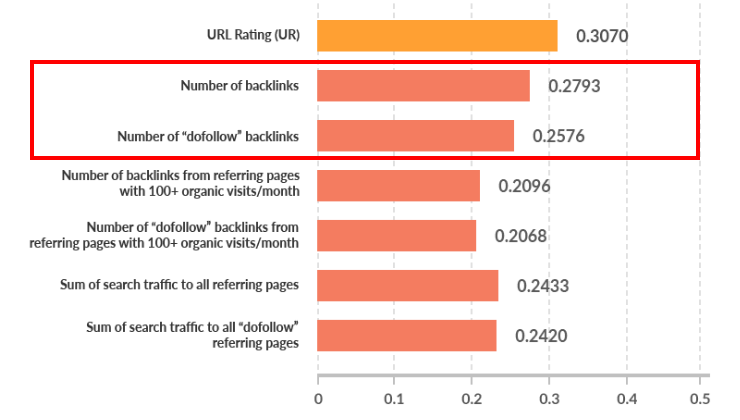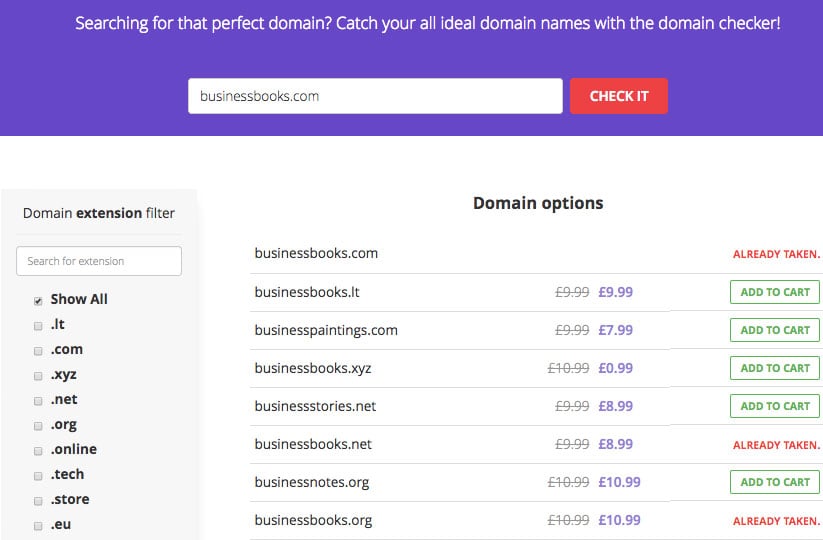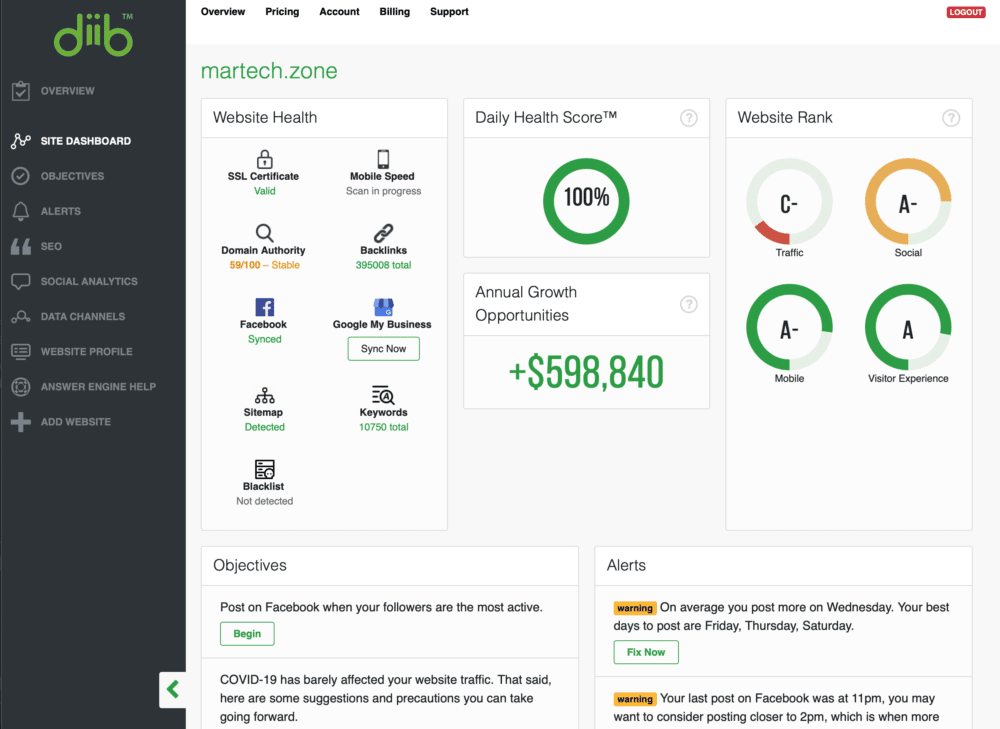Most website owners have no idea what makes their websites rank poorly on search engines. In many instances, poor ranking is caused, at least in part, by bad domain spam scores. As such, testing and reading your domain spam score is a skill any website owner should learn.
In a world where almost everything is digitized, owning a website is similar to owning a business—maintaining a positive reputation for your website is vital. As a website owner, one of the most challenging issues you may encounter is your website being viewed as spam by Google, other search engines, and your potential customers. Spam can harm your business, with the most likely outcomes being flagged, taken from top searches, and in severe circumstances, being pulled down.
With this in mind, it is vital to take a detailed look at what your domain spam scores are, factors to consider when assessing your spam score, why you should be aware of spam scores, and finally, how to find your domain spam score and the tools to use to do so.
Factors Influencing Domain Spam Score
Before delving into some of the factors to consider when identifying your domain spam score, it is vital to understand what a spam score is. A spam score is a rating system that predicts the possibility of a subdomain being spam on a website.

(Image Credit: Reputio)
Domain spam scores are based on machine learning, where a machine identifies standard features among millions of penalized and banned sites. A single spam backlink may do minimal harm to your website. However, constant and numerous spam backlinks may be disastrous for your website and your overall ranking on Google. Spam links are some of the most common reasons why websites lose their ranking, encounter de-indexing, and are eventually penalized. Thus, it is vital to use a spam score checker tool to assess your website and determine its spam score.
A spam score is usually based on a machine learning model that identifies 27 standard parameters that are present and common among most websites that have been penalized or fined for breaching Google spam policies. These parameters or flags help you determine whether the subdomain you are backlinking to is spammy. The final score obtained from the analysis is then compiled by adding all the factors identified on the individual spam flags. The higher the score, the higher the probability it is spam. However, this does not mean that your website is spammy.
On the contrary, various spam score factors determine a domain spam score. Additionally, these factors represent a variety of potential signals that may range from low authority metrics to high content concerns. For instance, domain spam score factors such as page numbers, domain location, and external links may make your website appear spammy. The following is a breakdown of these and other factors you should be aware of when hosting or running a website.
The Size of the Website and Present Links
Another way to test and analyze your domain spam score is by determining the website’s size and links. If your website has a large number of pages but few internal links, there is a high chance that it will be viewed as a spammy website. Websites are often flagged as spam because they don’t contain valuable or quality content. In most instances, quality content is determined by the likelihood of being linked to other sites. Therefore, if you have a new website, you should ensure that it has numerous links that can be interlinked.
Low Site Link Diversity
When your website gets a spam alert due to low site link diversity, it means that most links are from the same domains. For example, if you have a domain site with over 100 links connecting to it, it is highly likely to be flagged as being spammy. The spam score increases if the links are from only a few domains. This means that the site has low link diversity, thus increasing its chances of being flagged as a spammy website. You can always avoid this by ensuring that all your links are connected to similar numbers of domains.
The Ratio of Nofollow to Dofollow Domains
If your website has a high number of dofollow links compared to nofollow links, there is a high chance that it will be flagged as spam. This spam flag indicates that the website is not getting natural links but relying on paid links to generate backlinks to their site. With this in mind, keeping nofollow links rather than deleting them is vital, as this may make your website appear spammy.

(Image Credit: InboundJunction)
Small Portion of Anchor Texts/Branded Links
Branded links or anchor texts are links that contain specific branded keywords. Websites that have organically-occurring links tend to have a higher number of links that contain branded anchor texts. Therefore, if your website has the opposite (a significantly increased number of non-branded anchor text links), it will probably be flagged as spam.
Abnormally Small Site Mark-up
When testing spam scores, it is vital to consider your site’s markup. Your website markup includes elements such as Javascript, CSS, and Schema. These elements enhance a user’s experience and allow site visitors to easily access your website. Websites with slight site markups are usually flagged as being spammy. However, you can quickly tell that your website lacks standard markup if it has minimal formatting, needs better organization, and contains low-quality graphics.
You Might Also Like
What is Markup? Markup tells web browsers how to display a page’s words and images. Each individual piece of markup code (which would fall between “<” and “>” characters) is referred to as an element, though many people also refer to it as a tag.
A Large Number of External Links
Websites containing many external and a low number of internal links are perfect examples of spammy websites. These websites may include low-quality blog sites or any other poorly organized website. Regardless of how well you may try to design your website, if you have more external links than internal links, Google won’t have a hard time blacklisting it.
Low Number of Internal Links
Similar to the previous point, Google will blacklist your website for having a low number of internal links and a high number of external links. In Google’s eyes, a good website has a balanced number of internal and external links. Websites that lack a balanced number of links will most likely be labeled spam.
Anchor Text-Heavy Page
Google arithmetics assesses your website based on various spam score factors, such as its quality content and the number of anchor texts linked to its internal pages. In instances where a site has a large number of anchor text heavy pages compared to its content, Google will likely view the website as being spam. Therefore, it is vital to ensure that your website content is quality and that the anchor texts linked to it are of high quality as well.
The Presence of External Links in Navigation
Your website’s navigation system is a simplified way of moving between pages. When you bombard your website with numerous external links, your domain spam score will likely increase. As a point of advice, it is vital to ensure that any link you create within your navigation system is valid and has a purpose. Therefore, it is advisable to have one or two high-quality external links rather than numerous low-quality external links.
Your Website’s Domain Length
There are sites with short domains and those with large domains. If your website has a large domain, Google will most likely view it as a spammy website. This is because Google considers long domain words as an attempt to stuff keywords for ranking purposes. As you may be aware, keyword stuffing is one way of getting blacklisted on Google pages. On the other hand, if your domain name is small, it will pass the Google spam test. For example:

(Image Credit: seaforthland)
Absence of Contact Information
Reputable websites will always have a dedicated section on their web pages specifically designed for contact information. The presence of this information increases the website’s reputation and lowers its spam scores. The opposite happens when a website lacks contact information.
The contact metric is vital because it gives you two crucial SEO-related sets of information: your subdomain’s spam possibility and subdomain backlinks’ spam possibility. These two factors are essential since they help create pages that can be used to generate backlinks that will most likely propel your website to the top of most search engines. In addition, contact information also gives you a framework that can determine the spam probability of your site’s pages, ultimately preventing your website from being penalized.
A Low Number of Internal Pages Found
A well-designed website has a considerable number of inter-connected pages. These pages should have quality content that aligns with the website’s purpose. If your website has a low number of pages, it may be considered spam. However, a website with numerous pages will still need to pass the domain spam score test. Therefore, to safeguard your website against spam, have a considerable number of pages and link them to quality pages within your website.
Top-level Domains (TLDs) Correlated with Spam Domains
Websites originating from TLDs have a terrible reputation for being spam websites. Perfect examples of such websites are those sites that originate from domains with “.loan” links. If your website has such domains, it is probably blacklisted.
Your Domain Name Contains Numerals
Website domains are known to contain only words. However, some sites have numerals within their domains. Even though this is a common practice, Google may easily flag your website as spammy. Therefore, changing the digits into letters is advisable rather than having a website with numerals. For instance, rather than using 5starhotels.com, use fivestarhotels.com. By doing this, you will have a unique website and one that is not viewed as spam by Google arithmetics.
Why Check Your Domain Spam Score?
A spam score checker is an essential tool every small business owner should consider since a failure to do so may see their website rank plummet, and in severe circumstances, the website may be pulled off online. Unfortunately, the sad reality is that even though most website owners run a genuine and “clean” website, they still risk being blacklisted. The good news is that such issues can be fixed if the proper measures are implemented to design a well-organized website. More importantly, you can avoid these issues long before you launch your website by validating and updating your contact list.
What Domain Spam Score Checker is the Best?
This is a question that lingers in any website owner’s mind. The good thing is that various domain spam score checkers can be used to monitor your website and give you a spam score that will help you optimize your website according to Google algorithms.
Some of the most popular spam score tools come from Moz and Diib. Both of these tools rely on live Google arithmetics to monitor your website and alert you when there is an issue with your website, domain, or backlinks.

(Image Credit: Martech Zone)
Diib stands out as the best spam score monitoring tool as it gives you the freedom to concentrate on other things while it monitors your website. This can be based on the fact that this spam score tool has a website monitoring tool that automatically detects issues within your website. Diib has features that will also help you get a clear picture of your competitor’s activities. This is an essential feature if you want to stay ahead of your competitors.
Another reason that makes Diib stand out is that it has ranking features that alert you any moment your website drops or climbs the Google ranks. Since your website is affected by the presence or absence of spam, any drop in ranking should be a point of concern. With Diib, you never have to worry about your website dropping ranks without your knowledge.
Diib Digital: Improve Your Domain Spam Score Today!
While there is no one formula that will protect you or your website from being flagged as spam, you can monitor your domain spam score and prevent future spam. Diib offers a comprehensive solution to your domain spam score needs. Never let another bad link slip past you. Here are a few of the features you’re sure to appreciate:
- Bounce rate monitoring and repair
- Social media integration and performance
- Broken pages where you have backlinks (404 checker)
- Keyword (including snippets), backlink, and indexing monitoring and tracking tools
- User experience and mobile speed optimization
- Technical SEO monitoring
Click here for your free 60-second site scan or simply call 800-303-3510 to speak to one of our growth experts.



